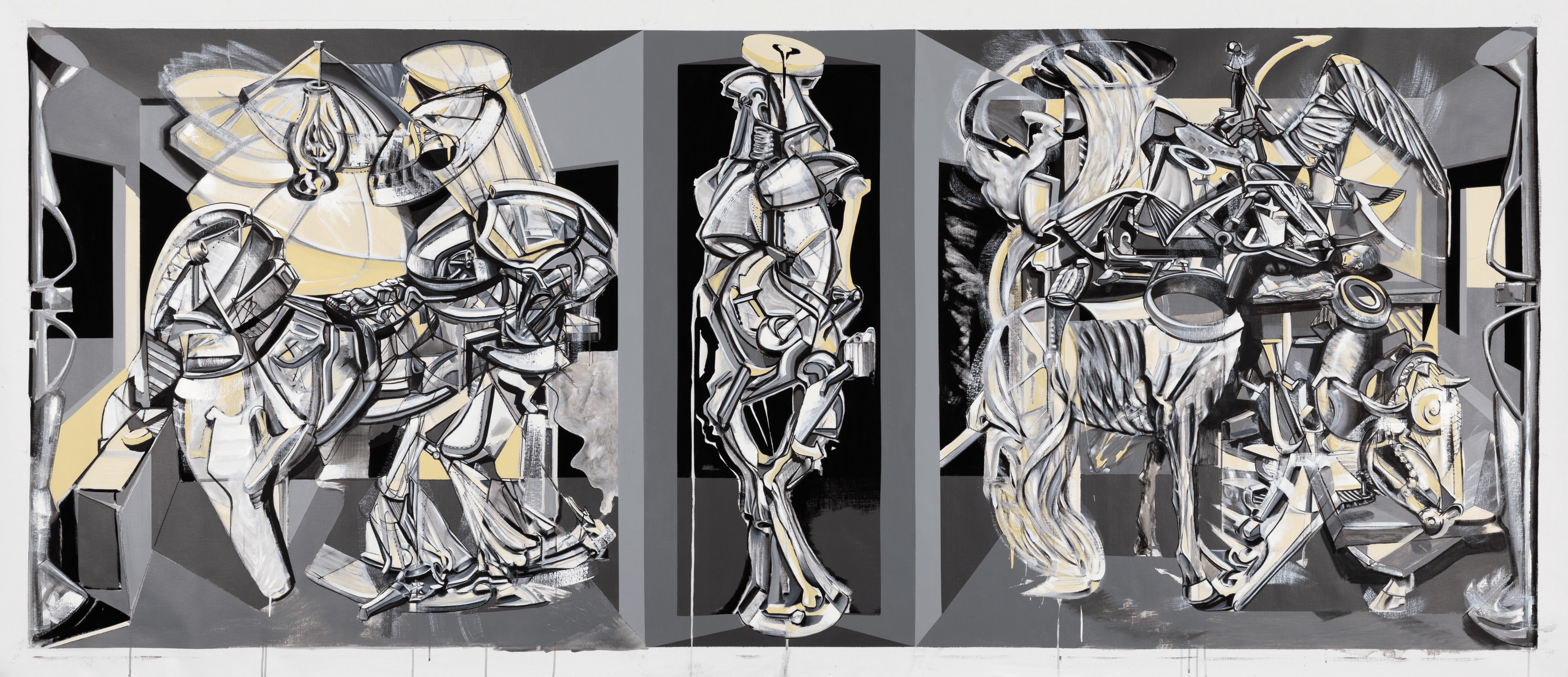Taking his cue from the Cubists and reaching as far back as Uccello, Amir Hariri creates futuristic, metallic deconstructed visual tornadoes that reinvent the human form, as well as lived habitats and buildings. Recent works by the artist are on view from March 7 through April 13 in Amir Hariri: The Future Was Now at Atamian Hovsepian Curatorial Practice, located at 227 East 24th Street in Manhattan.
In this exhibition, Hariri ventures into a post-futurist realm and responds to contemporary crises like the pandemic and climate change. Through his work, he aims to invite contemplation of these collective traumas and their accompanying historical injustices and violent subjugations. He uses the entire canvas to express his vision: “I like to explore the surface at hand in a methodical, structural way as well as the process of breaking down an object before burdening it with our own experiences.”
To science fiction fans, Hariri’s art may hint at the frightening Cylons of the television show Battlestar Galactica (2004–2009) and drones used by civilians and the military. Inspired by the Quattrocento, his piece “Miracle of the Host” (2023) alludes to Arshile Gorky and the epigenetic post-traumatic stress he and other descendants of genocide survivors experienced. In the case of the Armenians, this includes the added psychological wounds inflicted by the denialist whitewashing of the event by its perpetrators.
The upheaval of revolution and war in Amir Hariri’s native Iran heightened his awareness of human survival in the face of tragedy. Humanism undergirds his seemingly dehumanized images, reminding viewers that AI and human intelligence have already started to merge, a theme explored in “The Intimation” (2023). Hariri’s work intends to ask whether the changes brought by AI will lead to humanity’s salvation — or bring about its doom.
Hariri’s mobile-like structures take Alexander Calder and other “artist-engineers” as inspiration. In the eponymous site-responsive installation on the gallery’s lower floor, his dilapidated sculptural piece is meant to ignite in the viewer a renewed sense of urgency: “I continue to delve into our fatalistic response to catastrophe: does our ability to predict the outcome of a disaster aid or obstruct our response to it?” Hariri’s work unfolds as a form of research into the delicate intersection between human and constructed, a relationship that continues to increase in size and importance.
To learn more, visit atamianhovsepian.art and follow @atamianhovsepian on Instagram.

